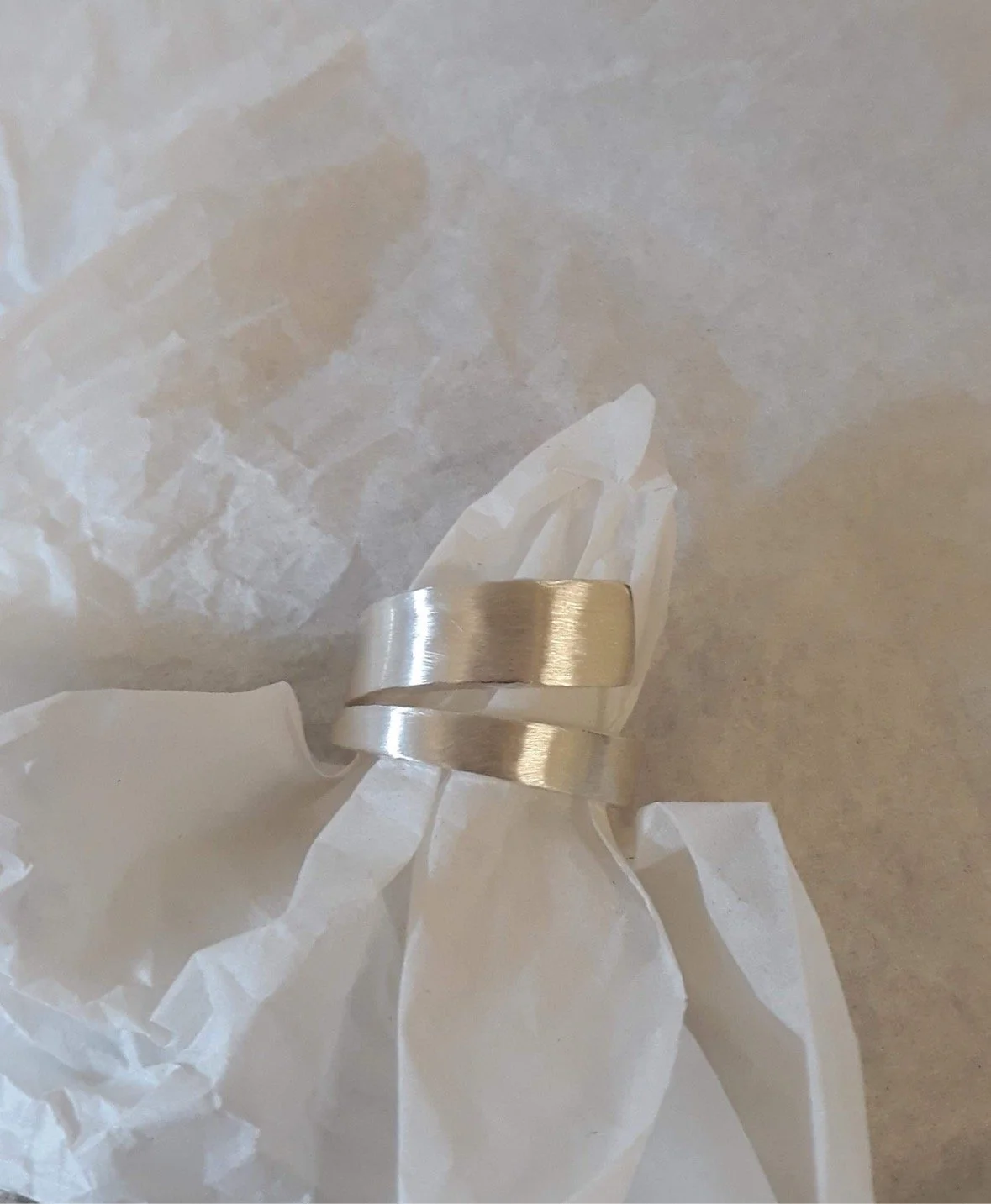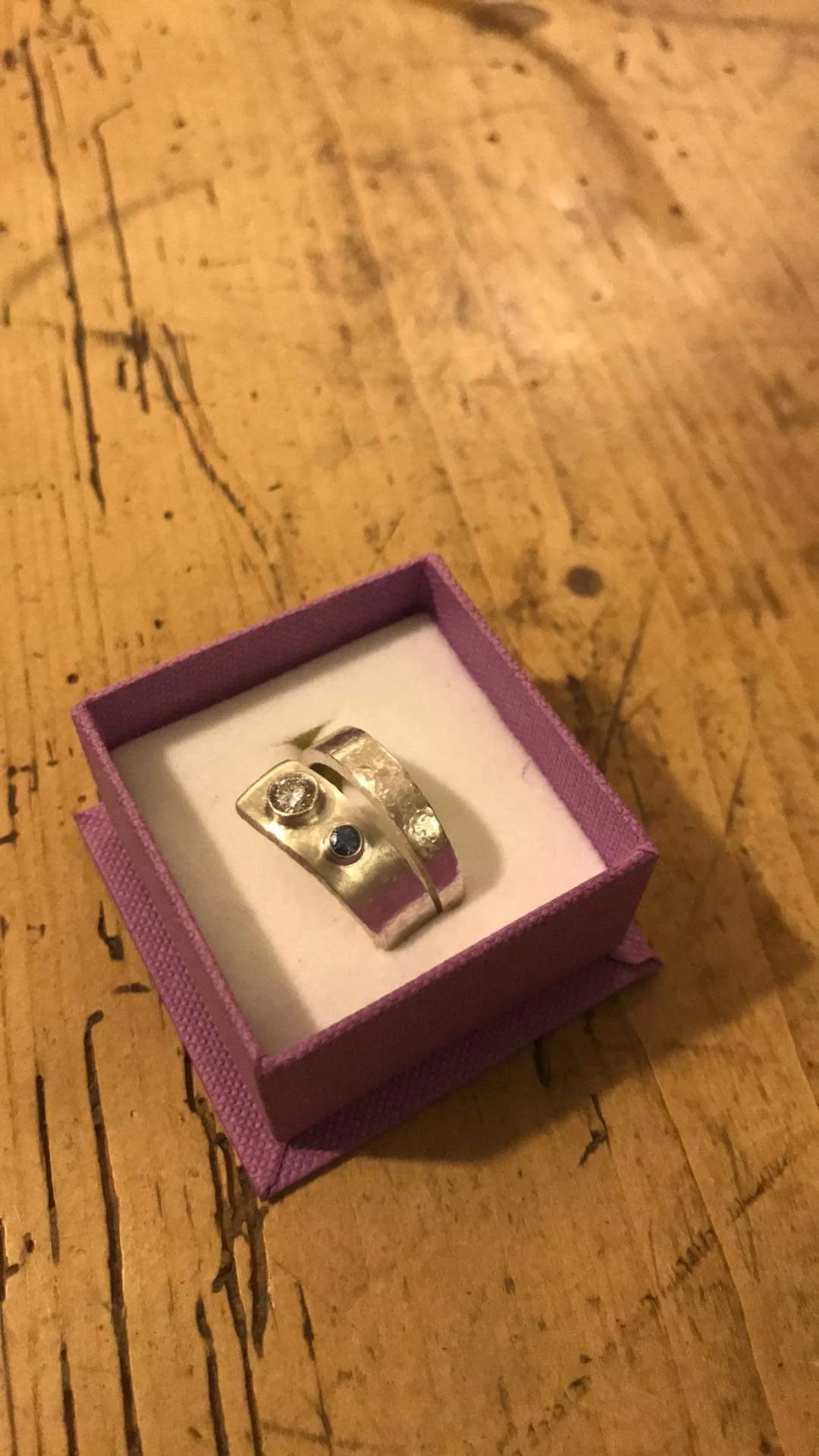Help! I've damaged or lost my ring, necklace or earrings?
Oh no! I’ve just spotted there’s a stone missing from one of my rings!
Let me tell you - It is totally gutting when you notice a gemstone is missing from a piece of jewellery. You’ll scan high and low wondering when it went (one of my redesign clients even retraced her steps to a festival toilet …) but the gem is nowhere to be seen. Even at the jeweller’s bench if a gemstone drops on the floor it is ridiculously difficult to find again!
But all is not lost - You have options!
Firstly, if the piece of jewellery is insured, and you want to make it look as it did originally, you can contact your insurance company and find out if they will replace the missing stone like-for-like.
Alternatively, you can decide if you would like to change that particular stone (especially a centre stone) for a different gem type - if you’ve lost a centre diamond, perhaps it is time to set a gorgeous coloured gemstone there instead!
If you have lost a little side diamond in your jewellery, it should be easy for a jeweller to source a diamond with the same 4Cs (carat size, cut, clarity and colour) as the remaining diamonds and replace it.
Or, you could take this opportunity to redesign the damaged piece into a whole new item of jewellery that is more your style! How exciting is that!? Take a look at this case study:
Sarah was at a festival when she noticed one of the three diamonds in her engagement ring was missing, she retraced her steps (including to the festival toilets - shudder!!) but to no avail. After the dust settled she had the most wonderful idea what to do next - both her daughters were in their teens and Sarah decided to gift a unique diamond ring each to them for their 18th birthdays.
I helped her design a style that was modern, textural and perfect for Ellie, her eldest, using one of her remaining diamonds and a brand new sapphire.
But what is Sarah’s using for an engagement ring I hear you ask?! Well her husband bought one of my gorgeous Diamond and Star Sapphire rings for Sarah for their 25th wedding anniversary!
I’m sure there were two earrings in this set …
I’m still searching of one of my favourite earrings - it is an enamelled poppy stud from The Royal British Legion’s Poppy Appeal website. Last seen when the cats were kittens and had started exploring our bedroom … anyway, I hold out hope that I’ll find it someday!
If you’ve lost an earring, it is possible to get a jeweller to make a replacement one to match. If it is a rare or unusual stone, it might take longer to find the right gem, but get creative! Perhaps you could have a mis-matched earring made that complements your remaining earring, and gives it a modern twist.
If it is proving impossible to match your remaining earring, all is not lost, perhaps it could be turned into a pendant to go on a neck chain instead?
Prevention is better than cure, and making sure that your butterflies are secure is key. If there’s a big gap between the two loops of the butterfly (they can open up over time), give them a little squeeze so the earring has more friction when it clicks through the butterfly.
For really precious studs, think about replacing the pin (the stick that goes through your ear) into a threaded pin with a screw-back butterfly. Omega butterfly backs are also very secure - you have to squeeze a couple of tiny tabs to release the butterfly, so it cant happen by accident - they are fiddly though!
I’ve scratched or chipped my gemstone!
A gem polisher wouldn’t create a gemstone out of a rough that wasn’t structurally sound. but gemstones are natural and even if you can’t see any inclusions with your eye, it is likely that there are microscopic fissures, cavities and weak points within the crystal structure.
Each type of gem has a different molecular structure, and some are more susceptible to damage than others.
Diamonds may be the hardest mineral on Earth, but it is not impossible to damage them. A friend of mine smashed several of the diamonds in her engagement ring when she was moving a heavy piece of furniture - the impact hitting her ring probably saved her hand, but the diamonds smashed and needed replacing.
The shape of a gemstone can also affect its durability, as pointy corners (such as on pear, marquise and princess cut gems) can be damaged by pressure and knocks on the corners.
Generally gemstone damage occurs because of:
Abrasion (general wear and tear)
Impact
Pressure damage on a pointy corner or edge, or an unknown weakness within the gem.
Chemical damage
In general, any coloured gemstone that has been worn for many years (particularly in a ring) will probably show some kind of abrasion wear under magnification, it might have a scratched surface, or tiny chips on a faceted edge, like this amethyst:
But what can you do to repair a gemstone?
Well, there are options, unless the stone has shattered into pieces, it could be recut and polished into a smaller or different shaped gem. The cost of re-polishing might outweigh the value of the original stone, but it is always there as an option. Re-polishing can also help remove any scratches on the face of the stone, making it as shiny as new.
The metal of my ring is getting really thin!
Rings have a tough life - they get knocked and bashed pretty much every time we wear them. Even if a knock or a scratch is only a few microns thick, it will still wear down the metal over time. Gold and Platinum have different wear behaviours (if knocked, Gold chips away in tiny particles similar to how chalk behaves and Platinum spreads around like butter).
It is particularly important to check the metal on any jewellery with claw settings around a gemstone. These claws are tiny and they can wear down or get knocked away from the gem over time. I suggest you take a good look at your jewellery at least once a year with a jeweller’s loupe or magnifying glass to check that all the claws are still there, and if so, that they look solid and are holding the gem securely. If you spot anything that looks odd, take it to a jeweller for repairs straight away before you risk losing a gem.
Some jewellers can laser weld a replacement claw in-situ without needing to take the gemstone out - it’s a clever way of adding the missing metal back in without taking the piece of jewellery apart.
The amethyst ring on the left below is going to be redesigned into a necklace, but you can see the uneven claw wear and length on this close up photo and also that one of the claws (bottom right) is missing completely!
Thanks for reading this post - I’d love you to dig out your magnifying glass (or your phone’s camera on max zoom) and take a really good look at your precious jewellery!








